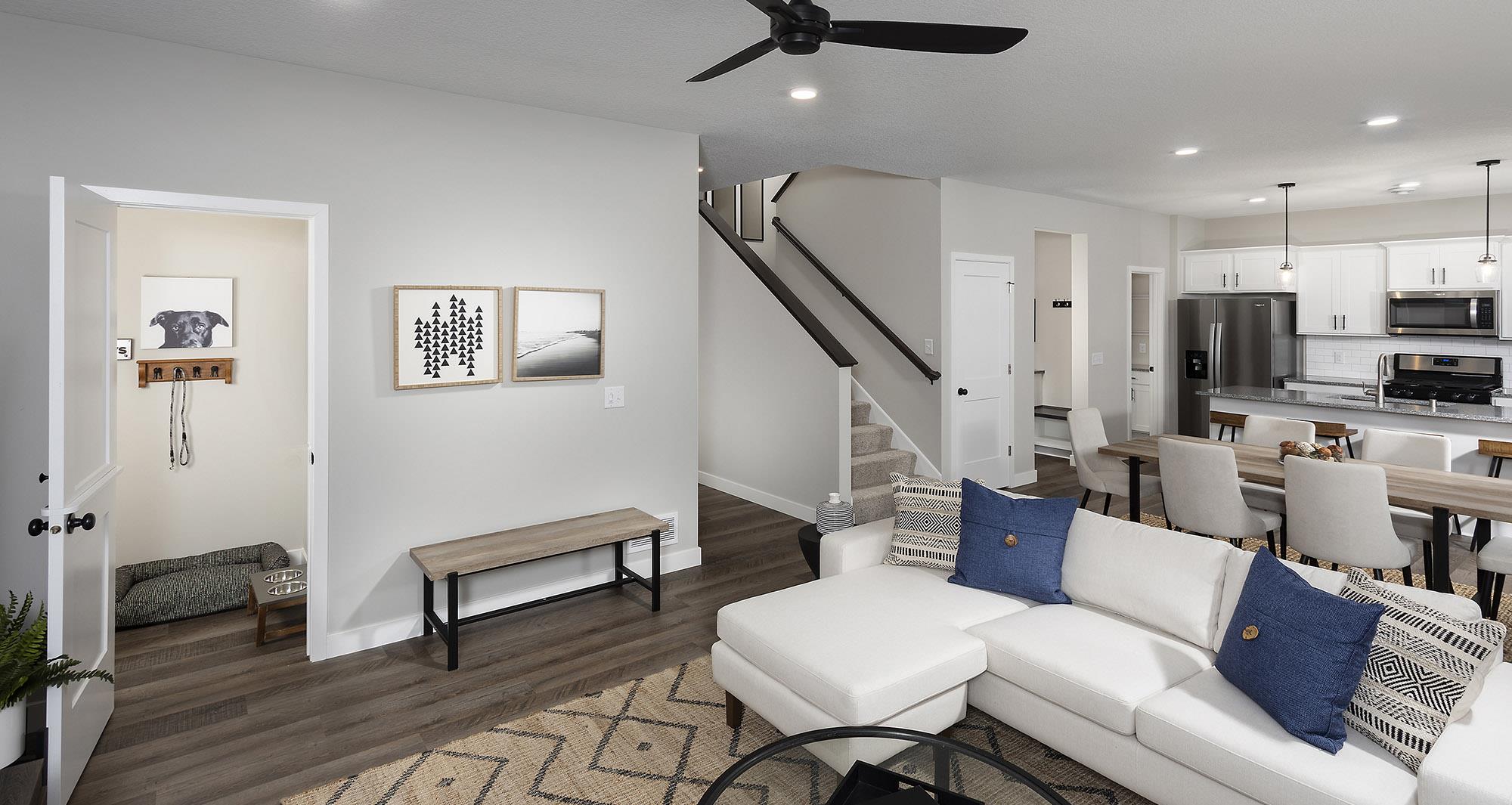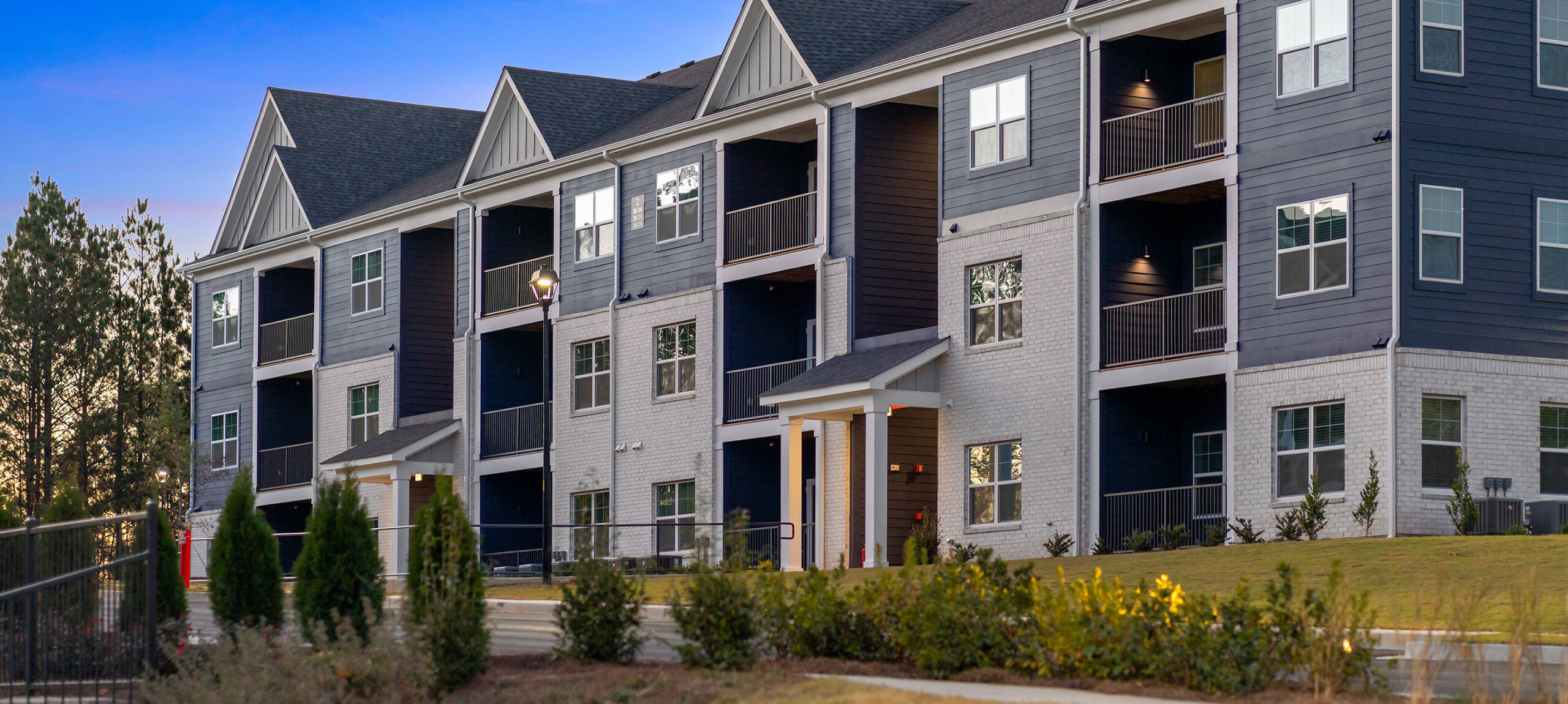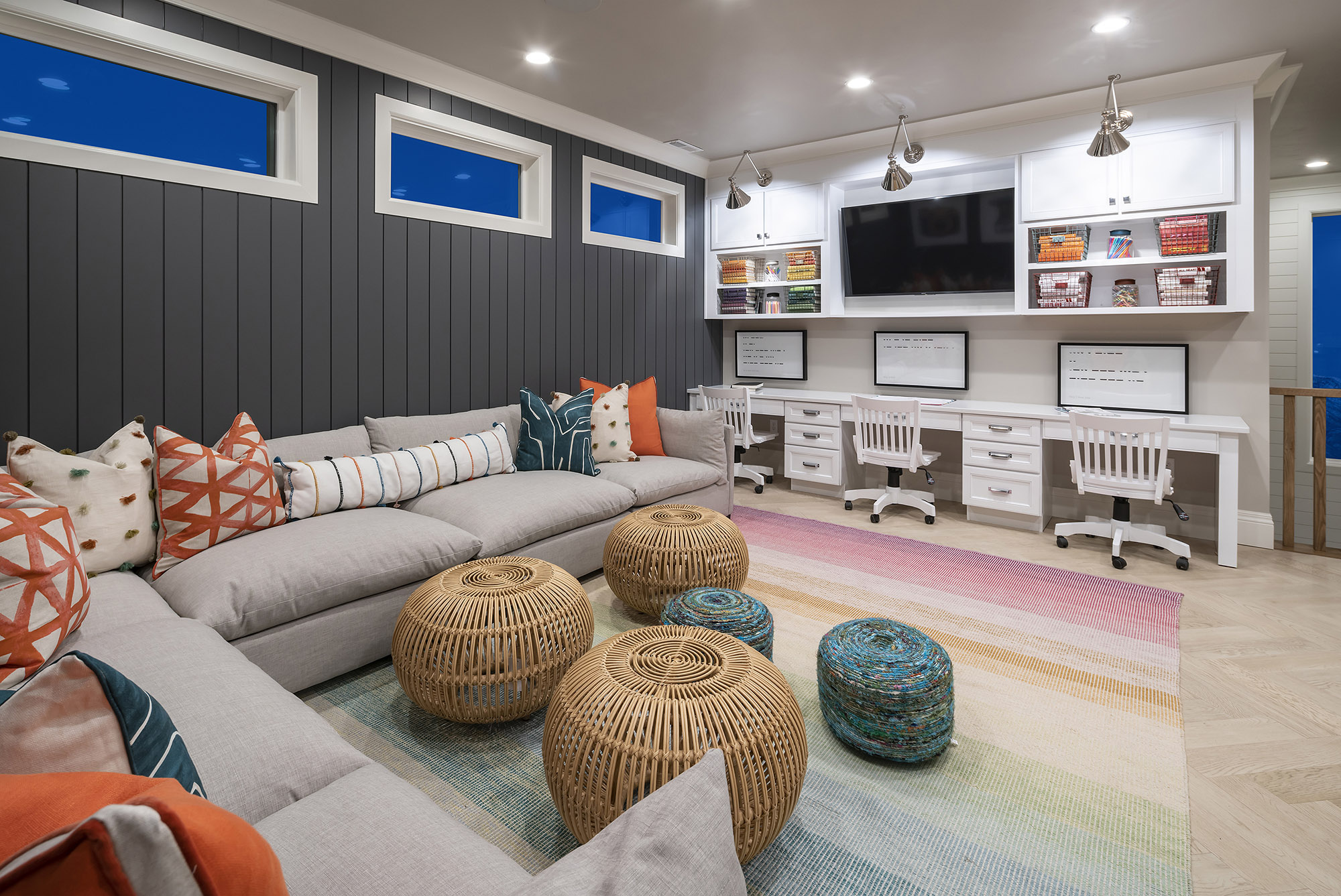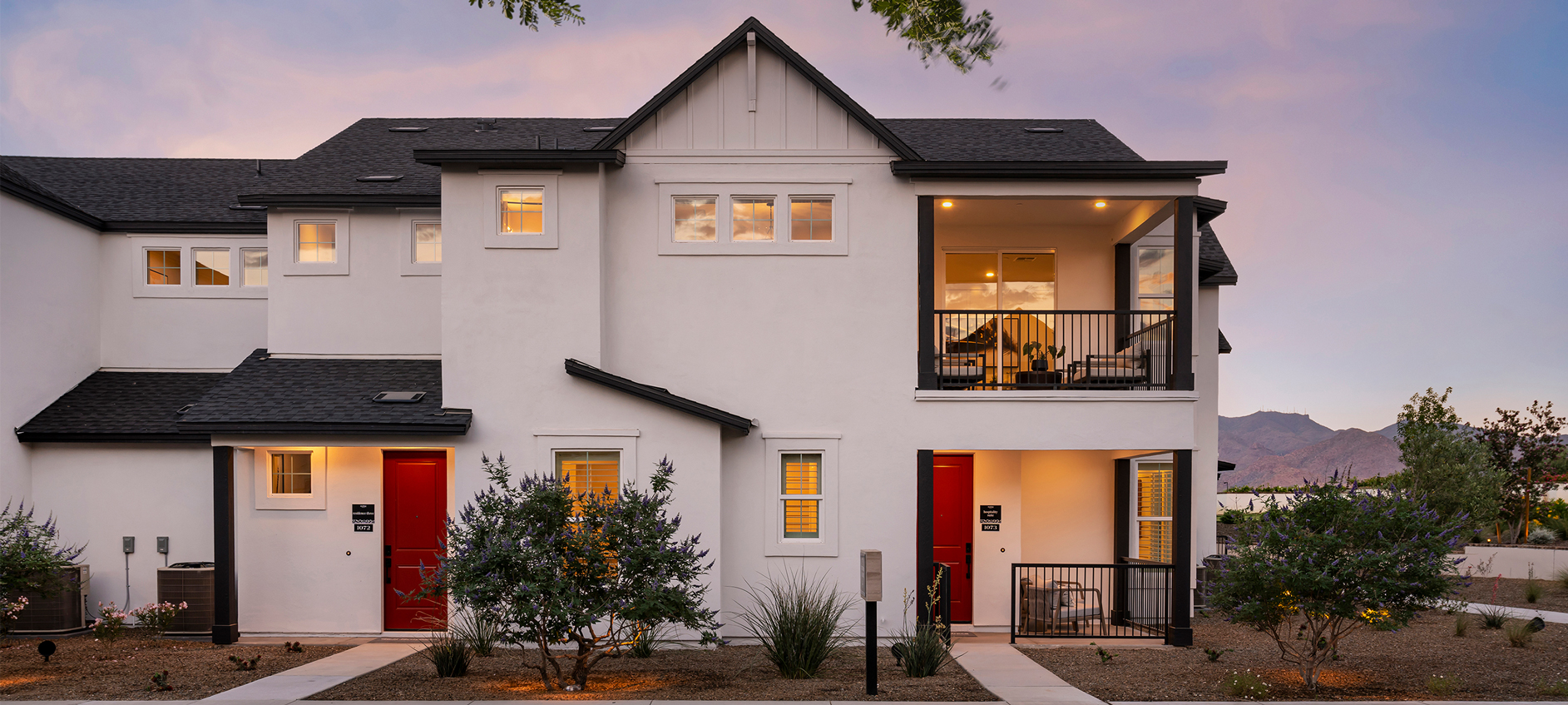Build to rent continues to perform well, and some subtle but impactful design and development trends are proving to be difference makers in the hottest markets. Arizona, California, Texas and Florida are four of the most active build to rent markets that are informing strategy nationwide. BSB Design experts from these states share their perspective on how to achieve build to rent success in 2023.
BALANCING PRODUCT & COMMUNITY
Rental communities across the country are spanning the full spectrum, from small efficiency units to full-scale luxury product. According to Rick Henry, a good balance of product types within a single community has been the best way to ease municipal approvals in Arizona and California. Regardless of unit type and size, Henry says, “Builders and developers are dialing in on their formula for design and finish so new rental units easily outperform existing, aging housing stock and can even compete with new for-sale construction.
The flexibility of single family living is super appealing to build to rent consumers in all markets. In Florida, Michael Kramer suggests that builders should incorporate flexible use spaces within the floor plan even while working hard to standardize the unit portfolio. “Detached and attached build to rent homes have a huge advantage over traditional multifamily apartment units in terms of variation via plan layout and room offerings,” Kramer says. “It’s fairly simple to include a pocket office or flex room that helps renters feel like they have choice and personalization, and this can be a key differentiator when shopping typical apartments that don’t offer these niche spaces.”
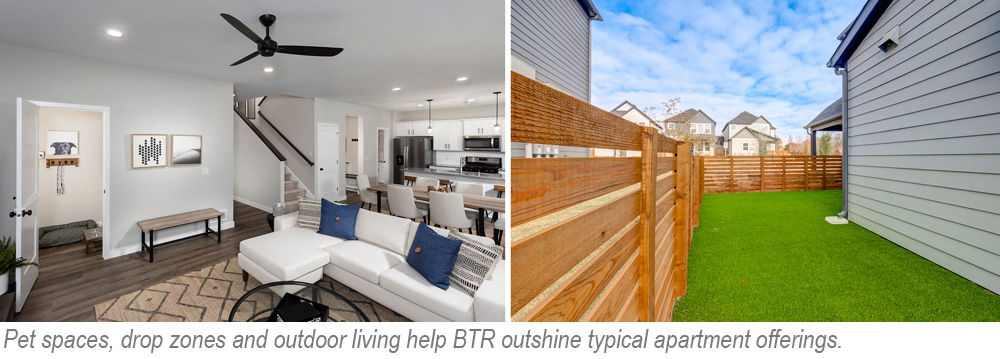 Most importantly, community designers across the country have solved the land planning and zoning issue with many mid-sized regional builder clients by designing pockets of rental product within traditional for-sale communities. This process enables an economy of scale that helps the rental product pencil, and the phasing of the rental portion provides some buffer if sales slow.
Most importantly, community designers across the country have solved the land planning and zoning issue with many mid-sized regional builder clients by designing pockets of rental product within traditional for-sale communities. This process enables an economy of scale that helps the rental product pencil, and the phasing of the rental portion provides some buffer if sales slow.
AMENITIES & GARAGES
In Texas, Dave Copenhaver notes that, “Entry level duplex units without garages are proving successful when complemented with a small community building (or multiple, focused amenity areas within the community). Larger detached units in the same development can leverage rear-load layouts to create shared communal areas that renters find highly valuable.” This integrated amenity enhances the detached environment and allows developers to reduce individual lot sizes. Homes still offer private outdoor living, but access to larger open spaces means those private areas can be quite modest without degrading the experience.
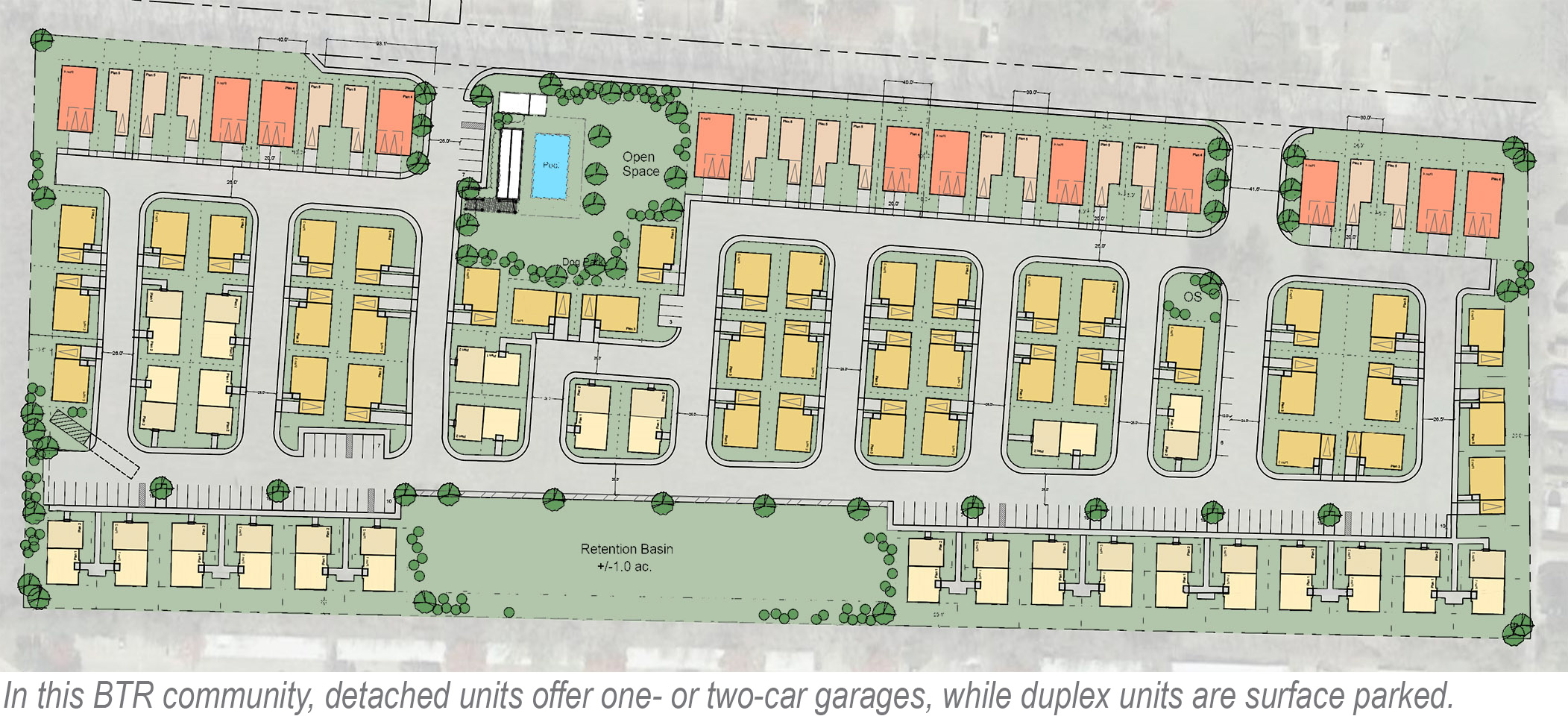 How we approach garages is changing, and Copenhaver also notes that his teams are designing more one-car garages for attached and detached homes. Henry agrees, and in both Texas and California, there seems to be some correlation between garages and amenities. Units without garages are typically supplemented with a more robust amenity building, while those with garages tend to have fewer, smaller built amenity spaces – or none at all. Location is still a key factor in California, though: “When local dining and entertainment is walkable, it’s less likely that developers will include dedicated amenity space,” says Henry.
How we approach garages is changing, and Copenhaver also notes that his teams are designing more one-car garages for attached and detached homes. Henry agrees, and in both Texas and California, there seems to be some correlation between garages and amenities. Units without garages are typically supplemented with a more robust amenity building, while those with garages tend to have fewer, smaller built amenity spaces – or none at all. Location is still a key factor in California, though: “When local dining and entertainment is walkable, it’s less likely that developers will include dedicated amenity space,” says Henry.
Across Texas, however, Copenhaver sees developers investing in more amenities, not fewer. “They still want to fully leverage the site to incorporate more openness, but the focus is really on trying to compete with Class A multifamily in terms of brick and mortar amenity spaces. A lot of that is driven by density solutions where we’re blending row-style townhomes and even walk-up garden apartments with detached and paired single family rental units.”
Copenhaver says location still drives some of the amenity discussion, like in Austin where clients are including EV charging stations in response to the construction of a new Tesla plant. This includes chargers in individual garages for some of the detached and paired products, but the design also scatters chargers throughout surface parking where it makes sense.
STANDARDIZATION & PLAN PORTFOLIOS
Nationwide, standardization has been a real game-changer for larger developments of 50+ units. Fewer window SKUs is a focus for sure, but cabinet sizes and even similar (or identical) kitchen and bath layouts from a floor plan perspective have really helped our developer clients leverage their design investment and minimize some of the costs incurred due to variability in the field.
In all four of our subject states, prototyping is a crucial strategy for builders and developers looking to scale their build to rent divisions. Copenhaver and Kramer both note that their teams are working on plan portfolios that enable clients to take product across the region with minimal adjustments – typically just an elevation treatment or other minor style modification. This baseline library even simplifies the transition to a different state or across the country. Leading design discussions with an “option mentality” helps the team create regional variance within the floor plan without requiring major footprint or structural changes.
For example, Copenhaver says renters in Texas are comfortable accessing the primary closet by walking through the primary bathroom, but Kramer knows that would never work in Florida. By working within the same primary suite layout, they can solve for both conditions using a single unit plan that the client can perfect from a costing and construction standpoint.
STILL A SAFE BET?
These experts agree that build to rent will be steady even as the industry is feeling downward pressure. At a recent IBS presentation, Kramer offered a concise summary of these trends, and both Copenhaver and Henry concur. They all think builders and developers can maximize success with these three strategies:
1. Develop hybrid communities containing for-sale and build to rent options.
2. Stay in the hot markets and amenitize according to regional consumer expectations.
3. Invest in prototype plans that can be deployed quickly in any market.
